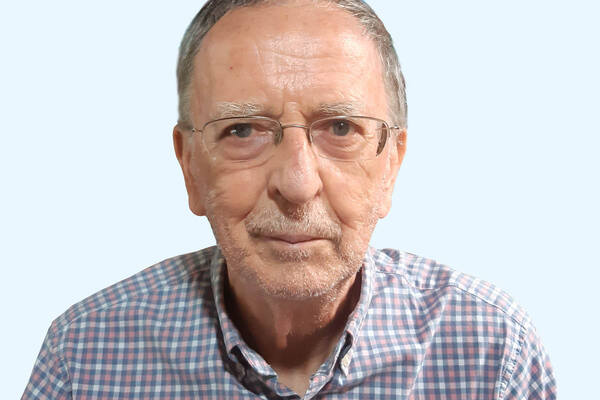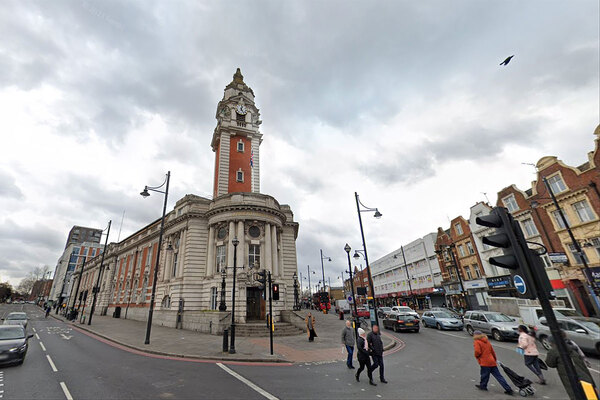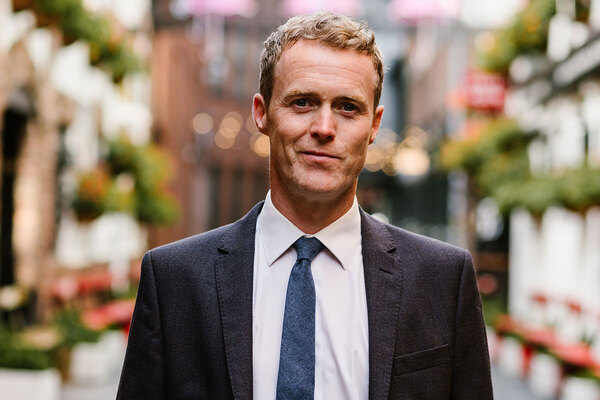Busting the myth
Media images of homelessness that are 25 years out of date won’t help eradicate rough sleeping, says Jeremy Swain
The supplicants’ hands are outstretched. They wait patiently to be chosen by the soup run volunteers distributing food on the Strand in central London.
I stand and watch in the gloaming and see Barry among the crowd. My heart sinks. Thames Reach housed Barry four years earlier. I waylay him as he’s eating. ‘Whatever happened to the flat?’ I ask. Barry frowns and explains that he’s still got ‘the gaff’. I’ve plainly insulted him. ‘The food looks good,’ I continue, trying to make amends. Barry is moving from irritation to anger. ‘I don’t need the food,’ he splutters, ‘we’re not homeless, we just come uptown for the crack’ (meaning conversation, not drugs). He waves his arm to indicate his circle of friends, who look equally insulted at being considered homeless. I beat a hasty retreat.
New definition
Later, Barry comes to mind when I search for ‘homeless’ on Twitter and read: ‘Sad to see so many homeless getting fed on streets of London.’
The conundrum of who exactly are the homeless returns to haunt me when I meet up with a new supporter from the corporate sector. He’s come prepared, having looked up the government’s most recent quarterly figures on homelessness showing a headline increase of 17 per cent in homeless acceptances between April and June of 2011. ‘Are these the guys on the street or the ones in the hostels?’ he asks. I explain that this statistic refers to a different group altogether; mostly families with dependent children at risk of losing their accommodation and who have a statutory right to housing.
‘So these are folks who have a roof over their heads and they have a right to housing and the people on the streets who haven’t got a roof, most don’t have a right to housing?’ I nod, adding lamely, ‘it’s complicated’, feeling that, for achieving clarity in communication, this is not my best week.
For most of the public ‘the homeless’ still conjures up an image of the rough sleeper consigned to living on the street. This iconic depiction of homelessness is particularly potent in the run-up to Christmas when most people look forward to spending time at home with their families and some, with consternation, wonder about those who can’t. It features prominently, some would say ubiquitously, in the leaflets, advertisements and campaigns that seek to raise funds for homelessness charities, many of which are struggling to maintain services in these bleak times.
Modern demographics
But there is a dilemma. Annual figures for London show that more than half of rough sleepers in the capital are not UK nationals. Twenty-eight per cent come from countries such as Poland and Romania, which joined the European Union in 2004 and 2007 respectively.
The statistics paint a chilling picture of who is living long term on our streets and the issues they face. Of this group 53 per cent have a drink problem, 38 per cent a mental health problem, 39 per cent a drug problem and 41 per cent have experienced prison. Outreach teams are routinely faced with complex immigration problems. Many from central and eastern Europe show a stubborn resistance to acknowledging that returning home is a better option than remaining in destitution in the UK.
Yet the images and the ‘homeless at Christmas’ stories that figure in the media rarely portray the contemporary composition of the street population. They more closely reflect the street population of the mid-1980s and, as such, are at least 25 years out of date. Thus pictures of teenagers and associated stories are a Christmas story staple even though in London during the whole of 2010/11 only four young people aged under 18 were found sleeping rough by outreach teams. And to counteract the view that young people prefer to sleep in out-of-the-way places or stay mobile at night so can therefore remain hidden, it should be noted that, these days, teams undertake outreach work in derelict buildings and on night buses.
The other common image and favourite media story is of the armed services veteran ignominiously left to fend for himself on the street. Again, the statistics over the past few years with remorseless regularity show that only around 3 per cent of rough sleepers were in the UK armed forces, along with a further 3 per cent who were in the armed forces of other nations.
Sympathetic stories
It is perhaps understandable why charities use these essentially spoof images of rough sleepers and why they are seized on by the media which, at Christmas at least, is eager to invoke public sympathy for the homeless. Homeless youth and armed forces veterans are the more palatable representations of homelessness and it is encouraging that their plight is regarded as an injustice that must be rectified. An image of a foreign national living in appalling conditions in a garage or shed, the reality regularly confronting outreach workers, is not going to bring in the donations.
But I remain troubled by the image of the homeless we project in 2011. To find the solutions to homelessness we must understand who is homeless and why, then engage honestly with the public, media, politicians and funders to find solutions that will end rough sleeping in this country once and for all. Creating this deceptive miasma - however justifiable it might be in order to raise funds - begs questions about how determined we really are to end rough sleeping in all its ghastly 21st century forms. You, the shivering, plaintive figure on the streets swaddled in blankets; can we really afford to see you go?
Jeremy Swain is chief executive of Thames Reach








